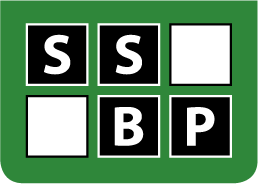Presentation 8 – Dr Laura Roche
SSBP Virtual Symposium 2023
The Pat Howlin Lecture:
Enhancing Expressive Communication Using AAC: A Case Study of One Boy with 22q11.2 Deletion Syndrome
Presenting Author : Dr Laura Roche
Abstract
Enhancing Expressive Communication Using AAC: A Case Study of One Boy with 22q11.2 Deletion Syndrome
Roche L.1, Sigafoos J.2, Campbell L.1
1 The University of Newcastle, Australia
2 Victoria University of Wellington, New Zealand
Background: Differences, delays and difficulties in expressive language are hallmark features of 22q11.2 deletion syndrome (22q11.2DS). Indeed, the majority of young children with 22q11.2DS will present with a speech or language disorder. These children are candidates for augmentative and alternative communication (AAC) to support and enhance their expressive communication skills. Despite this, the literature lacks evidence of AAC intervention for children with 22q11.2DS.
Methods: We conducted a naturalistic ABA multiple baseline design to teach one young boy to request preferred snacks and ask to play with preferred toys using Picture Exchange (PE). The boy could choose from 6 different snack items, and 5 different toy items. Intervention involved a least-to-most prompting hierarchy, systematic instruction and positive verbal and natural reinforcement. The first author implemented sessions as a model for the boy’s mother to follow, whereby over 50% of baseline and intervention, and 100% of follow-up sessions were implemented by the mother. All sessions occurred within the family home with familiar snacks and toys.
Results: During baseline in snacks, the boy produced unclear vocalisations and reached and/or pointed to the desired items. After 4 intervention sessions, the boy reached the pre-determined mastery criteria of 80% or more correct independent PE requests over 3 consecutive sessions. He maintained his independent requesting at 100% across 3 subsequent sessions of follow-up. During baseline in the play condition, he produced unclear vocalisations and reached and/or pointed to the desired items. During intervention, he reached mastery criteria in (yet to be determined) sessions.
Conclusion: The young boy was able to quickly learn to use the PE system and this system was easily implemented by his mother, within their family home, using familiar stimuli. Children with 22q11.2DS who experience expressive communication difficulties are candidates for AAC and should be able to access AAC to support their communication skills.
Keywords: DiGeorge syndrome, Augmentative and alternative communication, Parent intervention, Naturalistic communication intervention, Single case experimental design
Discussion Section
Use the comment box below to post questions for the author, and to discuss this presentation.
Note:
All comments are public, and comments may be moderated.
2024 SSBP Conference
Membership
Information
Contact
The Society for the Study of Behavioural Phenotypes (SSBP)
The Society for the Study of Behavioural Phenotypes (SSBP) is an international, interdisciplinary research society for studying the development, learning and behaviours of individuals with genetic disorders and ways of helping to improve lives. The society is registered as a charity in the UK (No. 1013849) and was set up in 1987.
Copyright 2024 © | The Society for the Study of Behavioural Phenotypes (SSBP)
